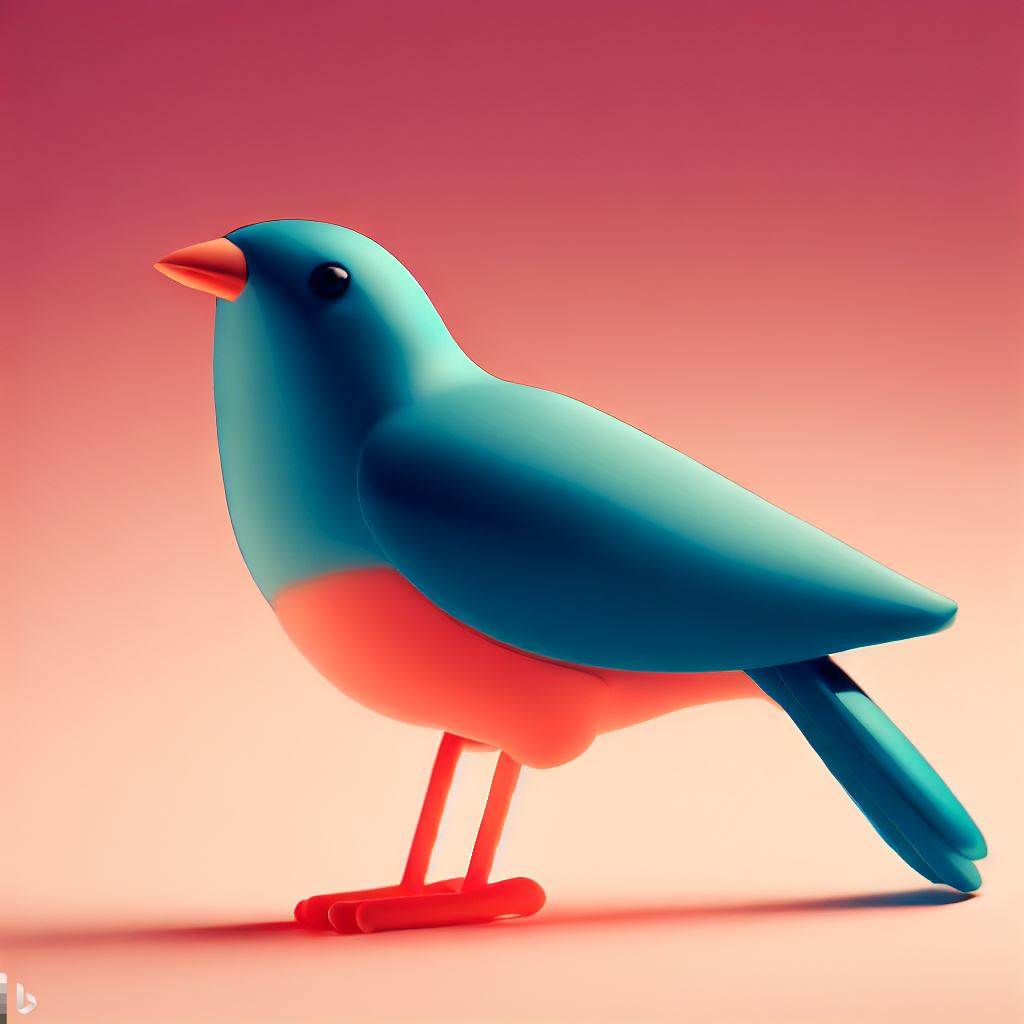Is plastic a safe product for my bird? Are there any unnatural chemicals used? I have read about phthalates, is that still used in plastic? Will my bird swallow plastic? Will plastic pass safely through if accidentally swallowed? Will my bird like playing with plastic? Why use plastic toys for my bird? What are some advantages and disadvantages of plastic toys compared to wooden toys?
Powder coated paint is plastic. Bird cages that are powder coated are painted with plastic paint. Birds living in powder coated cages without the presence of metallic or other harmful additives are healthy and have no known adverse effects from the plastic paint.
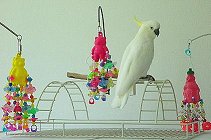
If zinc or other metallic additives are added to the plastic paint to help it adhere to the metal better, the zinc can cause a health problem. But don’t throw the baby out with the bath water, as most plastic does not have any metallic additives. The photo shows a powder coated cage with a playtop. My Greater Sulphur-Crested Cockatoo is very secure, healthy and happy with her plastic painted surfaces and toys.
As a general rule, birds don’t swallow non-food items like wood or plastic except by accident. Plastic requires 400 degrees of heat to break down. Due to this high-heat requirement, plastic will not melt or be compromised in your birds system. Anything small enough to swallow should pass right through their system and come out as “confetti bird poop.”
Plastic was first widely used on toys in my area of Texas in the early 1990s. Alphabet letters, airplanes, dominoes, dice, animal figures, and boats were the first plastic items many of us used on bird toys. These plastic toys continue to be great favorites of many parrots.
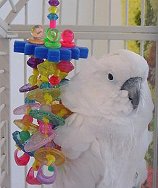
My observation is that birds who are afraid of toys are attracted to acrylic toys. Acrylic is a plastic. If the bird can see through a toy the timid bird feels better about the toy. Acrylics like pacifiers, see-through beads and buttons, and any sturdy acrylic part delight some birds that have never played with toys before. The Umbrella Cockatoo in the photo sleeps snuggled to her translucent toys. (See Picture of snuggled Cockatoo)
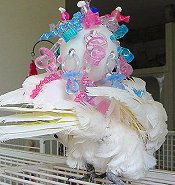
I am privileged to share my heart with a male Moluccan named Cowboy Dallas. His 2 wooden toys have been hanging in his cage since Christmas morning, over 6 months. He plays with plastic toys, using his wooden toys for leveling off his beak growth. He is a happy, strong, handsome boy and his plastic toys are a big part of his joyful and exuberant personality. (See picture of Dallas)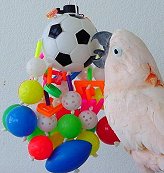
Some food dishes are plastic and no ill effects have been reported. To relieve cage boredom, provide more toys at affordable pricing, and just for the fun of it, see if your parrot would enjoy the plastic lid from a can or a soda straw or coffee stir. 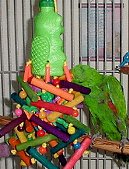
Match the bird’s size and strength to plastic toys. A powerful Moluccan can play safely with tough plastics and pliable plastics. A smaller parrot can play with a wider variety of plastics safely. Plastics have proven to be a safe part of today’s avian products. For more than 10 years we have housed our parrots in plastic coated cages and offered them toys of plastic. Today’s citrus-softened plastics have given parrot keepers new and exciting plastic products to enrich our parrots lives.

